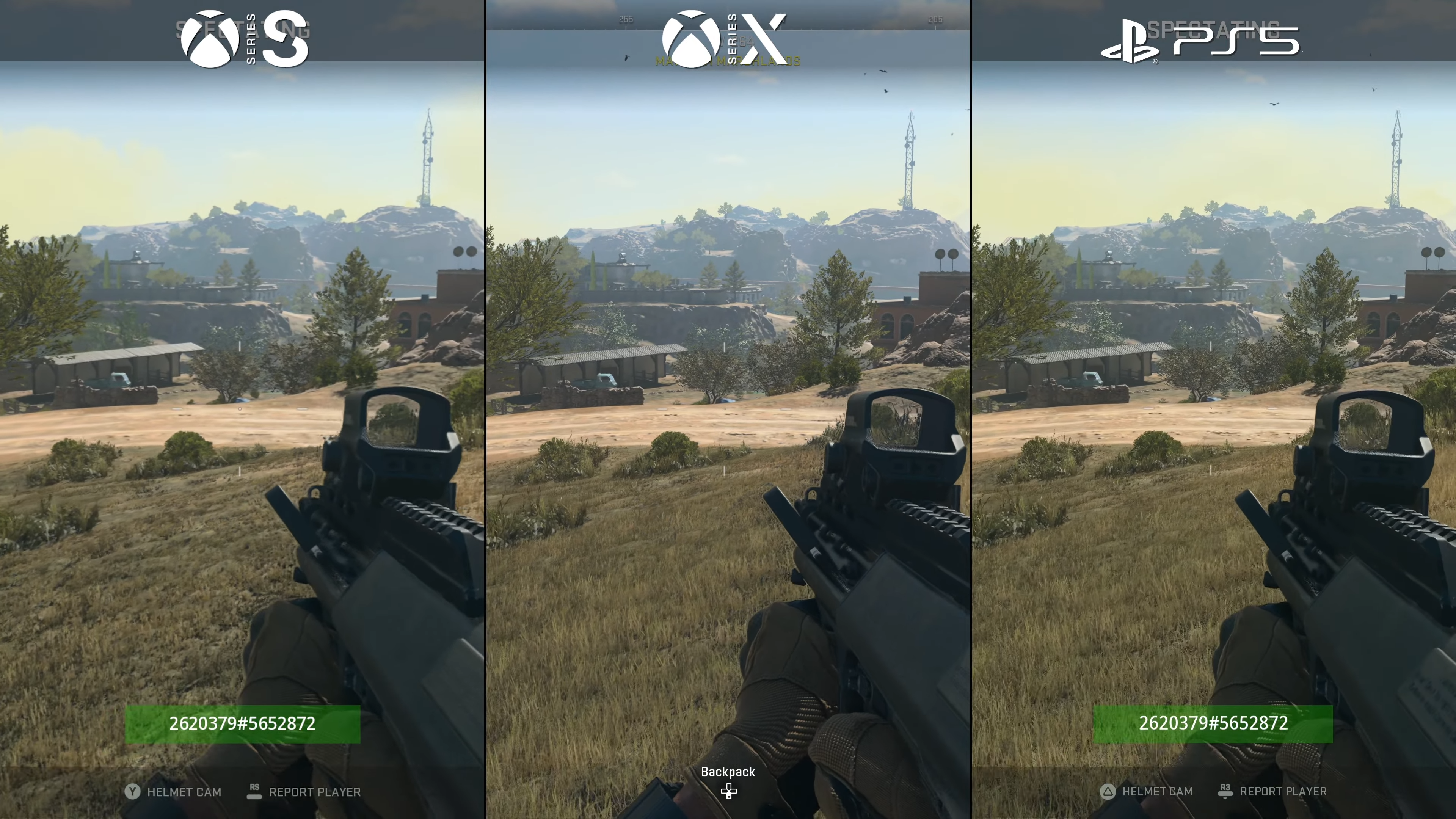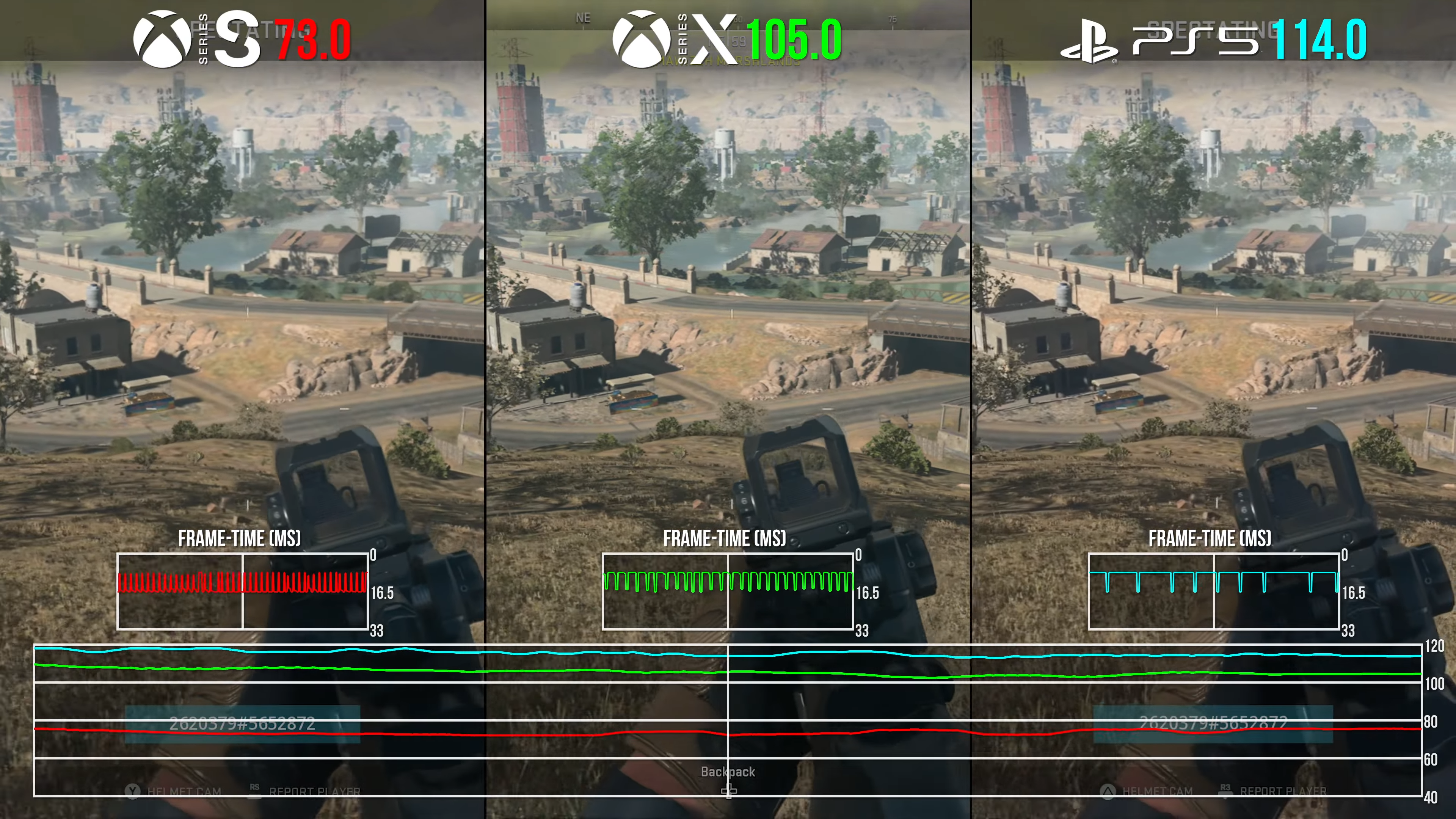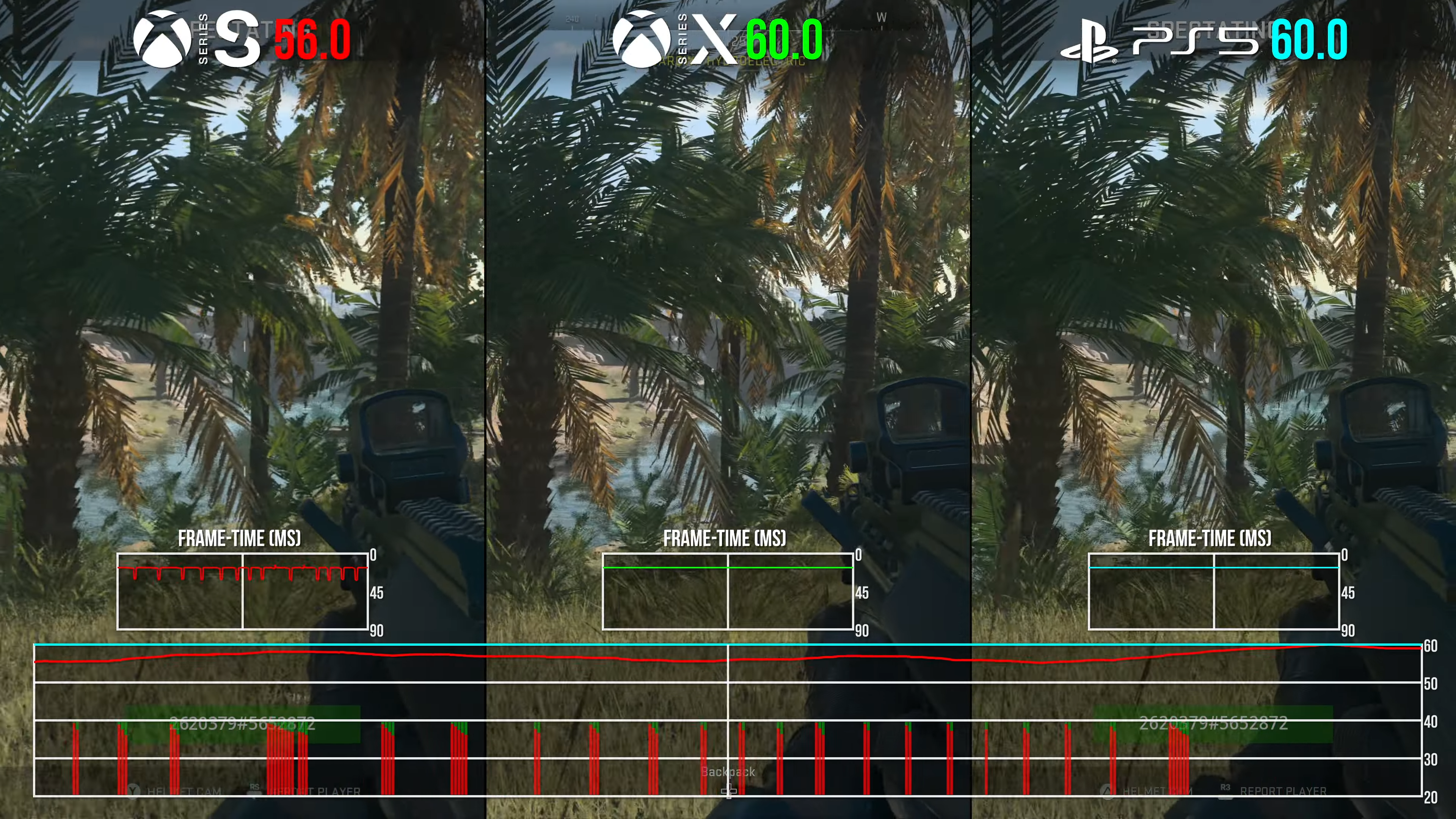To put this latest battle royale to the test, the whole DF team combined forces to get simultaneous crossplay capture of each console - starting with PS5, Xbox Series X and Series S. How do each of these platforms stack up visually, what’s performance like in the standard modes and how does the 120fps experience hold up for those with high refresh rate displays? Before we get into the numbers, let’s talk about what makes this game so challenging to play - and to run, even on powerful games consoles. As a battle royale, it’s all about the giant new map. Al Mazrah is truly colossal, a joint production between multiple Activision studios that ranks as the biggest battlefield in the series’ history. Tiny portions of Al Mazrah appeared in MW2’s 6v6 and 12v12 modes already but the field of play also includes classic maps from 2007’s Modern Warfare and 2009’s Modern Warfare 2. It’s a beautiful sight for long-time COD fans, and the map also adds new mechanics like boats and aquatic combat. So how best to get a sense of performance and visual fidelity on each platform? Well, a multiplayer-focused battle royale isn’t a natural fit for traditional benchmarking, so we set up a squad and used the game’s spectator mode to get frame-perfect comparisons between PS5, Series X and Series S. (In terms of settings, we’re using an FOV of 80°, with film grain and world/weapon blur disabled.) Put in comparison this way, all three machines have different resolution targets, graphics settings and frame-rates at 60fps or 120fps - and the results hold some surprises. Let’s start with the milkshake that brings all the fans to the yard: PS5 versus Series X. The two machines are identical in terms of settings, including resolution, shadows, textures and foliage density. The Series S is another story though, with cuts to grass density and shadow quality being the clearest downgrades for the 4TF machine. More importantly though, Series S is the best example of Warzone 2’s biggest divergence from the core Modern Warfare 2 technical setup: in its resolution. To put it simply, Warzone 2 uses a dynamic resolution with temporal upscaling to 1440p on Series S, and 4K on PS5 and Series X, just like Modern Warfare 2. However the base resolution here can scale to significantly lower numbers. In the main game, for example, Series S scales from 2560x1440 down to 1280x1440 - halving the pixel count on the horizontal axis only, which works brilliantly for holding 60fps. In Warzone 2.0, the resolution dynamically adjusts on both axes rather than just one, taking us down to 1280x720 at at the absolute lowest. Surprisingly, the temporal anti-aliasing upscaling (TAAU), does excellently even at such a low base resolution, producing a clean result that makes long views across Al Mazrah’s terrain easy to decipher and aiding in picking out distant opponents. It’s a similar story for PS5 and Series X, which can now drop to 1920x1080 at its lowest with scaling on both axes, rather than the horizontal-only scaling we saw in core MW2, but the presentation still looks reasonable on a 4K screen. What about performance then - and does each of the three consoles manage to hit the 60fps performance target? For PS5 and Series X, it’s honestly close to a locked 60fps. I’ve barely registered much more than a single frame dip, even with GPU usage rising as we approach the end of a game. Performance is extremely consistent throughout thanks to that wide DRS range and a scalable, well-architected game engine. Series S performs well too, albeit with occasional screen tearing right at the top of the display, plus drops to 55fps occuring only in a few spots with heavy foliage and nearby water. This suggests a GPU-side limit for handling water and transparencies, but it’s hardly a huge deal - in hours of testing these spots are rare, and most of the time you’re looking at a comfy 60fps. 120fps modes are often harder targets though, and this is offered on all three platforms too. Normally a doubling in frame-rate requires significant settings tweaks, but here the wide DRS range means that the game looks nearly identical, just more fluid and responsive with a slightly more variable frame-rate. PS5 and Series X are often between 100 and 120fps, while Series S sees more deeper and more sustained drops - but the 120fps mode is still well worth using on all three consoles, especially if you have access to a display with VRR support. Looking more closely at the numbers, there are a few more points to make. Number one is that PS5 is ahead of Series X in frame-rate in every scenario, with the advantage being worth up to 10fps in the very worst stress points - and Sony’s machine doesn’t suffer screen tearing either. In practise though, the bulk of play is at 120fps on both, with minor hitches while picking up weapons or entering vehicles - a potential network limitation. Despite these minor issues though, Warzone 2 is one of the best 120Hz experiences on PS5 or Series X, given its huge scale. Point number two is that Xbox Series S typically does not hit the full 120fps line for any consistent stretch. It’s more accurate to say it’s between 80 and 100fps, with occasional dips into the 70s. On a VRR display it’s certainly enough frame data to turn into a smooth result in motion - a frame-time window of 12.5 to 8.3ms, still an appreciable upgrade over 60fps’s 16.7ms frame persistence. Even so, there is a competitive reason to favour one of the premium consoles over Series S, with as much as a 40fps difference between Series S and X as we parachute back in from the Gulag. Still, the strong 60fps mode is also available here, and the 120fps mode is still a great choice if you’ve a VRR display. As a live service free-to-play game, it’s important to underline that this is the current state of Warzone 2.0 and things may change - for better or worse - in future. Right now though, from a visual and performance stance at least, Warzone 2 is really strong on all current-gen consoles. The 120fps mode works beautifully on PS5 and Series X, while Series S is no slouch either - though 60fps offers more consistent performance on the slimmer console. Image quality and shadow/foliage tweaks aside, it’s entirely competitive with the premium machines. Of course, our investigations don’t end here - looking at the last-gen versions on PS4/Pro and Xbox One/X will be fascinating, and I can’t wait to see how the original 2013-vintage Xbox One handles Warzone 2.0 - stay tuned.




